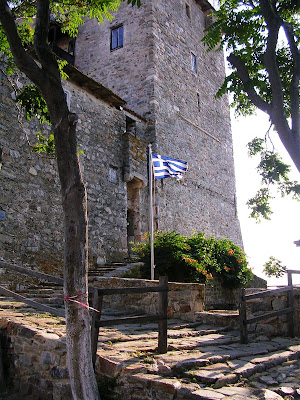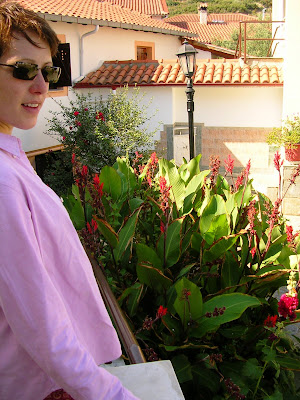Well, the results are in – I passed! I got a 7, which probably won’t mean much to most of you. It’s based on a scale of 1-10, with 5 as passing. My goal all year had been simply to get a 5, which many of us language-challenged Americans struggle to get. So I was quite happy with a 7. In fact, my teacher told me that I missed getting an 8 by a single point. Oh well!
Since the exam, what’s been happening? Well, John Karcher returned from two months away in America to finish his exams here at the university, and he stayed with us from last Friday until yesterday (Thursday).
Last night, I went downtown to attend a lecture by Fr. Spyridon (our confessor and the confessor for most of the Americans here) at Panagia Ahiropiitou. There, we ran into Fr. John Bethancourt (of the Antiochian parish in Sante Fe, New Mexico), his son, Daniel, and Daniel’s fiancée, Maria Gallos. Fr. John is finishing up a tour of the Biblical lands for his sabbatical, paid for by a grant from the Lilly Foundation. It was very nice to meet him, since he knows Pelagia’s family.
Meanwhile, this week, Pelagia and I embarked on a major project of repainting the kitchen and all our doors and doorframes. It’s almost done – we’re hoping we’ll finish tomorrow. Maybe I’ll post some before & after photos again.
On Monday, Pelagia starts on a painting job down in Harilaou which should take about 4 days.
As for me, I will now start on my first paid translation work! Fr. Peter Heers of Uncut Mountain Press (publishers of the Elder Cleopa books, etc.) has given me three essays to translate for a forthcoming book of lectures given at the Ecumenism conference held here in Thessaloniki in September 2004. For more information on the work, click here and scroll about a quarter or third down the page. There you can see a list of all the essays to be included. Some, already in English, are available for free by clicking on the blue link.
I will be translating the following three:
The Church of Bulgaria vis-à-vis Ecumenism
Metropolitan NATHANAEL of Nevrokop, Bulgaria
The Church of Russia vis-à-vis Ecumenism
Archpriest Valentin Asmus, Professor, Theological School of Moscow
The Problem of Uniatism in Ukraine
Ivan Diatsenko, Professor, Ecclesiastical School “The Ladder”, Dviepropetrovsk































